The Saigon Opera House, also known as the Municipal Theatre of Ho Chi Minh City, has been a key venue for performing arts since 1901. Built during the French colonial era, it reflects European architectural influences and local artistic elements. The building stands out with its decorative façade, grand interior, and ongoing cultural events. It hosts various performances, from traditional Vietnamese shows to contemporary theatre productions. Whether you’re planning a budget-friendly adventure or a luxury getaway, this guide will help you easily explore Ho Chi Minh City.
Saigon Opera House Location
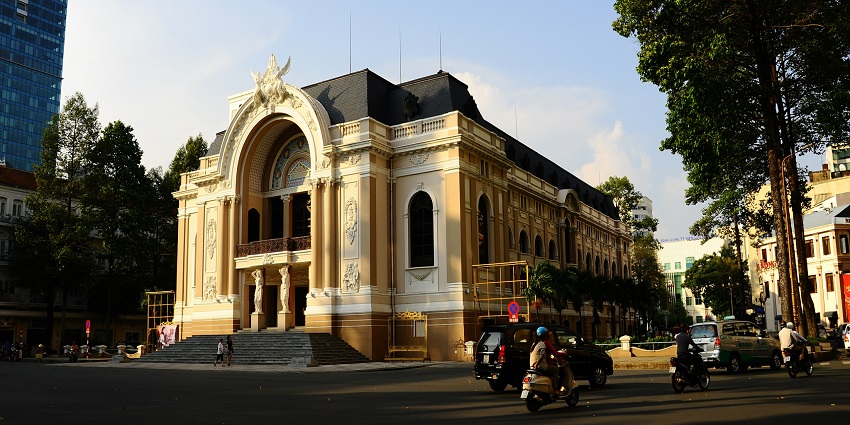
Photo: TomW712 / Wikimedia Commons
The Saigon Opera House is at 7 Lam Son Square, Ben Nghe Ward, District 1, Ho Chi Minh City, Vietnam. It is in a busy city, surrounded by historic landmarks, hotels, restaurants, and shopping areas. Its central placement makes it easy to reach from various parts of the city. The building showcases French colonial architecture, featuring elegant arches, intricate carvings, and a grand façade. It serves as a venue for cultural performances, including opera, ballet, and traditional Vietnamese shows.
History
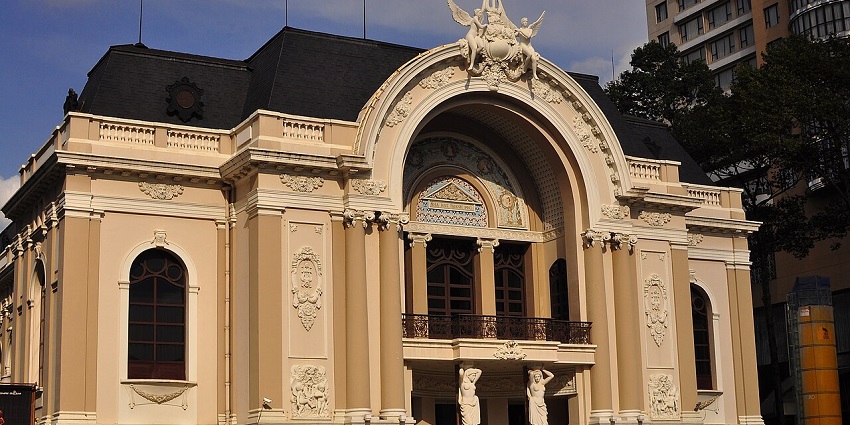
Photo: MarkVII88 / Wikimedia Commons
French architect Félix Olivier designed the opera house between 1898 and 1900 to entertain the French colonial population. Its design follows the ornate style of the French Third Republic, featuring stone sculptures, chandeliers, and a marble staircase. Over the years, it served different purposes, including a temporary shelter for French citizens in 1954 and the South Vietnamese Assembly House in 1955. After 1975, it resumed its original role as a cultural venue. 2012, it was recognised as a national relic, emphasising its historical and artistic significance.
How To Reach Saigon Opera House

Photo: Suicasmo / Wikimedia Commons
Travellers can reach Saigon Opera House through various modes of transport, as mentioned below:
By Air: The nearest airport is Tan Son Nhat International Airport, about 8 km from the opera house. Flights from India usually have one or two stops via hubs like Delhi, Bangkok, or Kuala Lumpur.
By Taxi/Ride-Hailing: Taxi and ride-hailing services like Grab cost around ₹400 – ₹800 for the journey from the airport to the city centre.
By Bus: Public buses are available at a lower fare but take longer due to multiple stops.
Places To Visit Around Saigon Opera House
Saigon Opera House is a French colonial-era landmark, hosting world-class performances, concerts, and Vietnamese shows. Here is a list of the places to visit around the Saigon Opera House:
1. Notre-Dame Cathedral Basilica Of Saigon
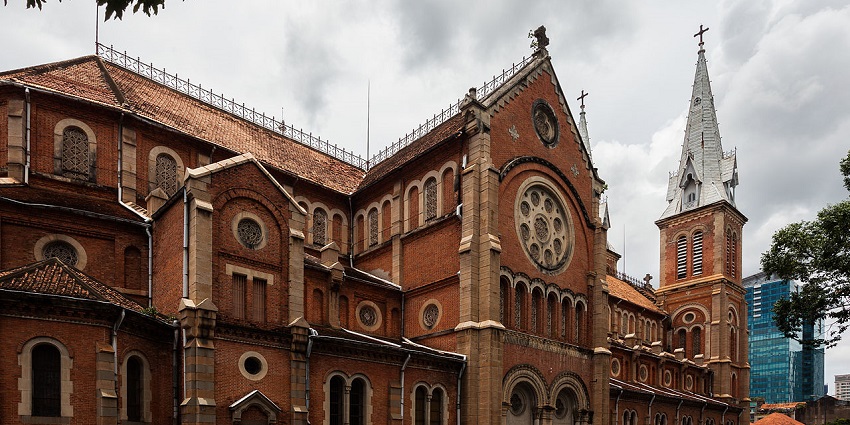
Photo: Diego Delso / Wikimedia Commons
Built between 1863 and 1880, the Notre-Dame Cathedral Basilica of Saigon symbolises Ho Chi Minh City’s colonial past. Constructed with red bricks imported from France, it features twin bell towers that rise above the city skyline. Visitors can admire stained glass windows, wooden pews, and a peaceful atmosphere. The cathedral remains an active place of worship, drawing tourists and locals who come to appreciate its history, attend mass, or enjoy a quiet moment.
Location: District 1, Ho Chi Minh City
Established: 19th century
Key Features: Red brick façade, twin bell towers, stained glass windows
Timings: Open daily (worship services available)
Entry Fee: Free
2. Saigon Central Post Office
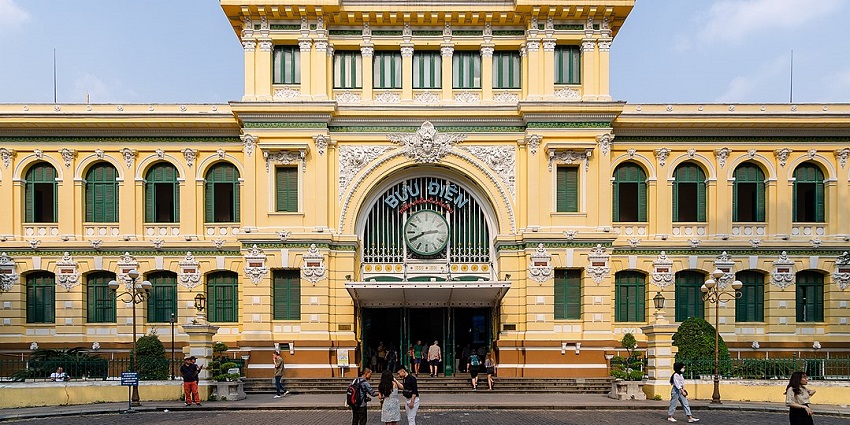
Photo: Steffen Schmitz / Wikimedia Commons
Alfred Foulhoux designed the Saigon Central Post Office. This working post office is more than just a place to send mail—it’s a window into Vietnam’s past. The building’s arched ceilings, vintage telephone booths, and decorative maps transport visitors to another era. Locals still use the post office daily, and tourists often stop by to buy stamps or send postcards home. The staff, dressed in traditional uniforms, glimpse a time when letter writing was the main form of communication.
Location: District 1, Ho Chi Minh City
Established: Late 19th century
Key Features: Vaulted ceilings, antique telephone booths, historical maps
Timings: Open daily
Entry Fee: Free
3. Ben Thanh Market

Photo: Diego Delso / Wikimedia Commons
This historic market has been a focal point of city life for over a century. From early morning, vendors set up stalls selling everything from fragrant spices to handmade textiles. Shoppers can bargain for souvenirs, sample Vietnamese food, or watch as skilled artisans craft traditional goods. The food section is a highlight, offering dishes like pho, banh mi, and fresh spring rolls. As night falls, the market continues buzzing with activity, especially around its famous local food stalls.
Location: District 1, Ho Chi Minh City
Established: Early 20th century
Key Features: Handicrafts, local cuisine, bargaining-friendly shops
Timings: Open daily (morning to late evening)
Entry Fee: Free
4. Reunification Palace
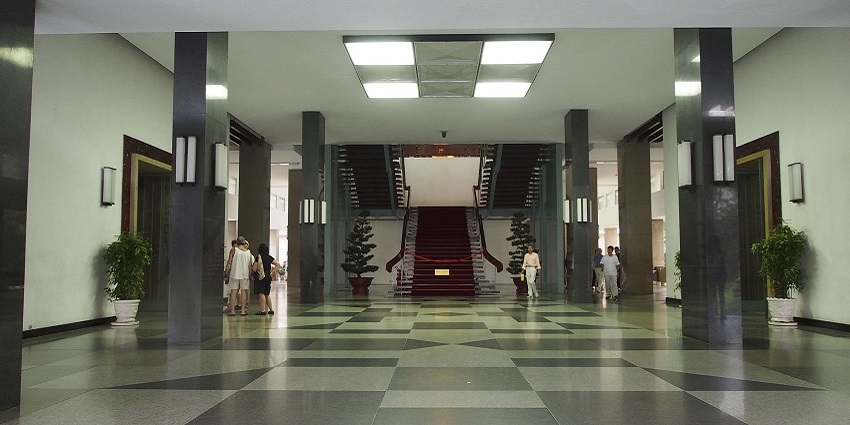
Photo: Clay Gilliland / Wikimedia Commons
Once the home of South Vietnam’s president, this building played a central role in the Vietnam War. Today, visitors can walk through its halls, where furniture, communication equipment, and maps remain just as they were in 1975. The underground bunkers and war command rooms provide insight into military strategies of the past. Outside, tanks from the war era stand on the palace grounds. Guided tours help bring history to life, explaining the significance of each room and artefact on display.
Location: District 1, Ho Chi Minh City
Established: 1966
Key Features: War command rooms, tunnels, presidential office, historic vehicles
Timings: Open daily (except major holidays)
Entry Fee: Approx. ₹250 per person
5. War Remnants Museum
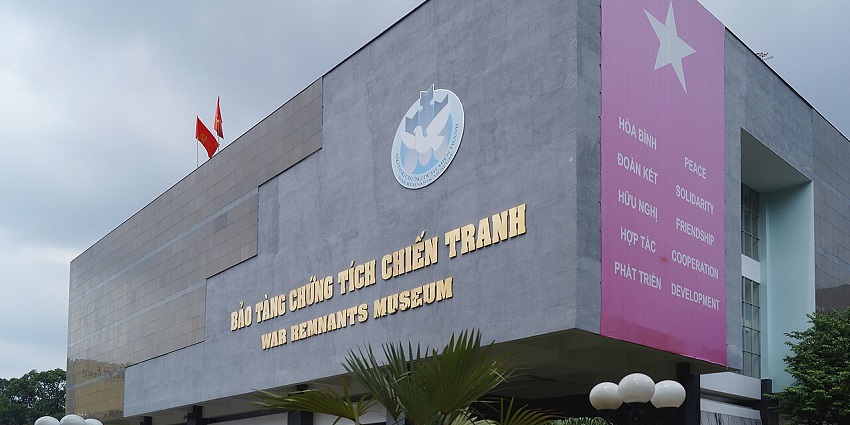
Photo: Prenn / Wikimedia Commons
This museum offers a sobering look at the impact of the Vietnam War, told through photographs, personal accounts, and military equipment on display. Visitors can see helicopters, fighter jets, and tanks up close, as well as exhibits detailing the experiences of civilians during the war. The museum’s powerful images and written narratives provide a deeper understanding of Vietnam’s history and the resilience of its people. It’s a place that encourages reflection, making it a significant stop for history enthusiasts.
Location: District 3, Ho Chi Minh City
Established: 1975
Key Features: War photographs, aircraft, tanks, personal testimonies
Timings: Open daily
Entry Fee: Approx. ₹200 per person
Where To Stay
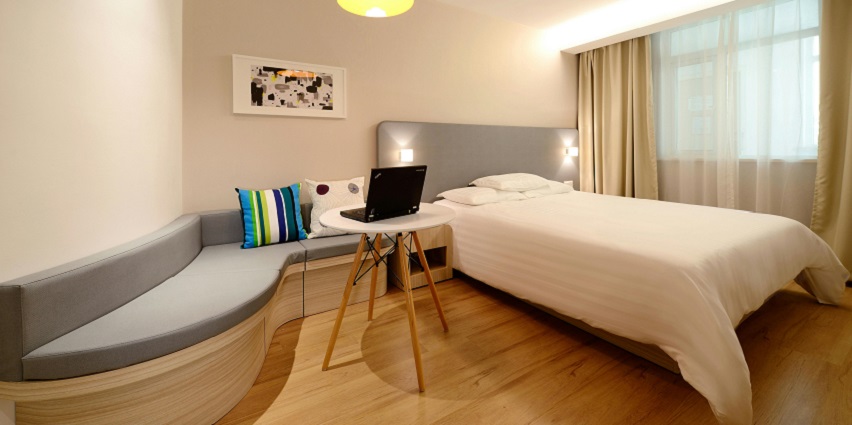
Photo: Pixabay / Pexels / Image For Representation Only
Ho Chi Minh City Hotels cater to different preferences, from stylish stays to luxurious experiences. Hotel des Arts Saigon offers artistic interiors and a rooftop infinity pool. Caravelle Saigon, located opposite the opera house, features spacious rooms and a rooftop bar with live music. Mai House Saigon Hotel in District 3 provides comfortable rooms and serviced apartments. For those seeking a quieter location, Sofitel Saigon Plaza in District 1 offers large rooms and a rooftop pool. Fusion Original Saigon Centre stands out with modern designs and a 24-hour pantry.
Where To Eat
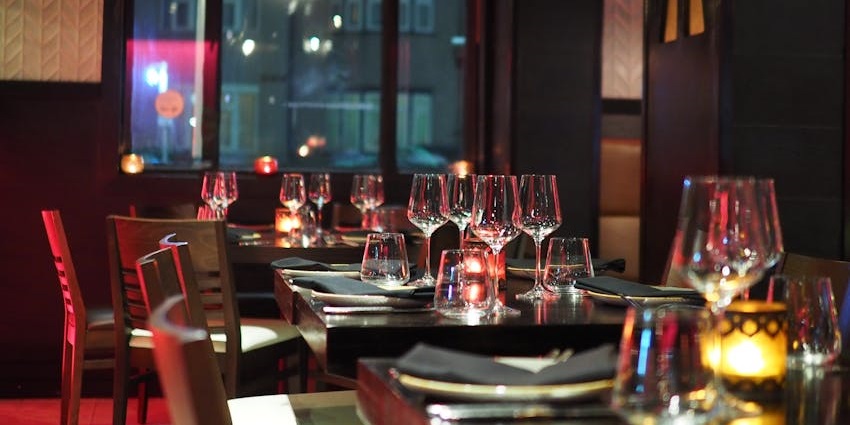
Photo: Chan Walrus / Pexels / Image For Representation Only
Ho Chi Minh City offers diverse culinary experiences, from traditional Vietnamese to international cuisines. The place near Saigon Opera House, Quan An Ngon, serves various classic Vietnamese dishes in a colonial-style setting, while Nha Hang Ngon brings the charm of street food into a comfortable dining space. The Refinery, a bistro housed in a former opium factory, specialises in French cuisine and wine. For an authentic street food experience, Ben Thanh Street Food Market provides multiple stalls serving Vietnamese specialities.
Best Time To Visit
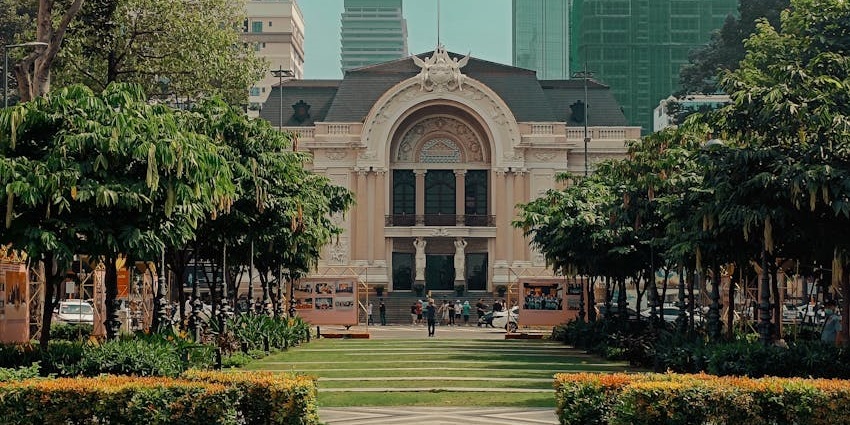
The best time to explore Ho Chi Minh City and Saigon Opera House is between December and March, when temperatures are moderate and humidity levels are lower, making outdoor activities more comfortable. Rainfall is minimal during this period, reducing the chances of disruptions. The Tet festival, celebrated in late January or early February, brings vibrant festivities, though some businesses and attractions may close during this time.
Other Factors To Consider
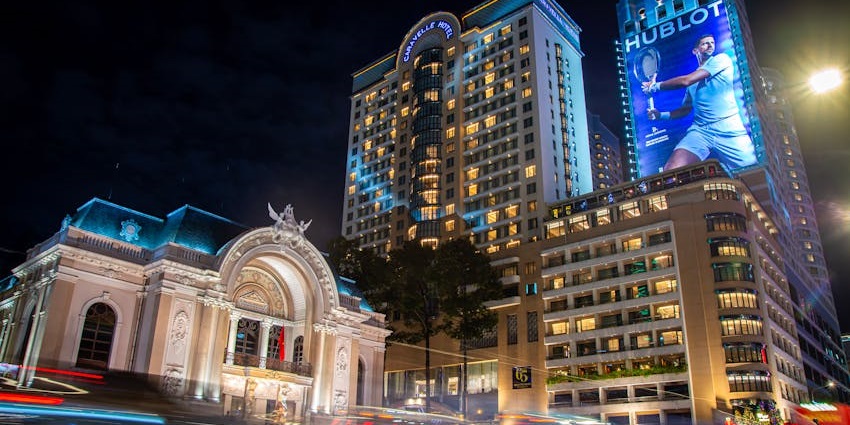
Photo: Ngọc Khánh Nek / Pexels / Image For Representation Only
Average Cost Of The Trip
A trip to Saigon Opera House can be planned based on personal preferences and travel styles. Flights from India cost around ₹25,000 per person. Budget-friendly hotels start at ₹1,200 per night, while premium accommodations cost upwards of ₹10,000. Local meals, including street food, cost ₹150 per serving, whereas restaurant dining averages ₹1,500 per meal. Public transportation, such as buses, costs less than ₹80 per trip, while taxis and ride-hailing services typically charge ₹250 per ride. Opera house performances cost between ₹1,600 and ₹6,400.
Tips For Travellers
- Currency: The local currency is the Vietnamese Dong (VND). While some places accept USD, carrying VND for local transactions is best.
- Local Transport: Download Grab for convenient taxi and bike bookings. Always confirm fares with traditional taxis to avoid overcharging.
- Language:: English is spoken in tourist areas, but learning a few Vietnamese phrases like “Xin chào” (Hello) and “Cảm ơn” (Thank you) can be helpful.
- Bargaining: Negotiation is common in markets. Start with half the quoted price and work toward a fair deal.
The Saigon Opera House is more than just an architectural landmark; it is a symbol of Vietnam’s cultural evolution. With convenient transport, great food, and plenty of nearby attractions, visiting this historic site fits well into a Ho Chi Minh City itinerary. Whether you’re here for a show or just to appreciate the design, the opera house provides a meaningful experience in Vietnam’s largest city. Book your trip with TripXL and immerse yourself in the rich heritage of Ho Chi Minh City.
Cover Photo: Thien Le Duy / Pexels


 WhatsApp
WhatsApp
 Twitter
Twitter









